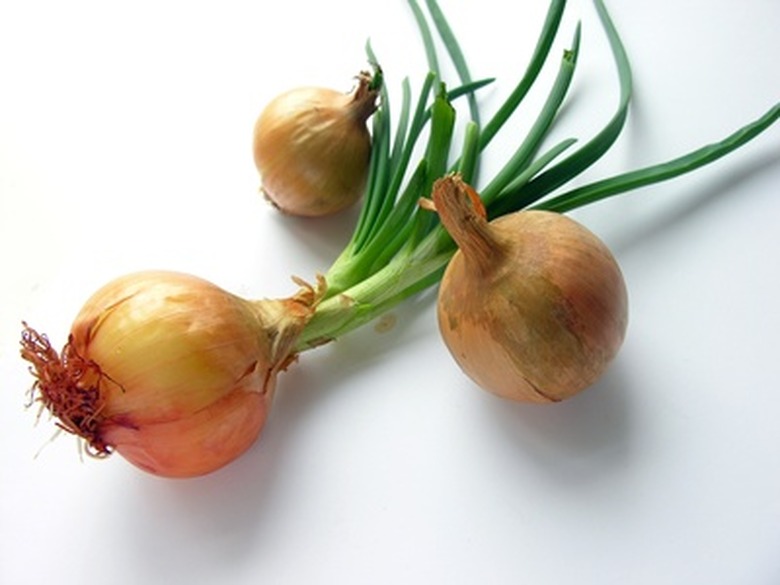How To Plant And Care For Texas Supersweet Onions
Things Needed
- Texas Supersweet onion transplants
- Rototiller or pitchfork
- Garden hose
- Starter fertilizer
- Hoe
- Ammonium sulfate or ammonium nitrate
Onions are cool-season vegetables that grow best in moist, cool soils. While they're forming bulbs, however, onions prefer warmer temperatures and drier conditions. Texas Supersweet onion plants produce large, globe-shaped onions with a sweet flavor. Sweet onions should be planted as early in spring as possible if you live in a colder climate. Texas Supersweet onions are typically grown from purchased transplants.
Step 1
Select a planting site for your Texas Supersweet onions that's in full to partial sunlight and has cool, fertile and moist soil. Remove all weeds and grasses from the planting site and loosen the soil using a rototiller or pitchfork.
- Onions are cool-season vegetables that grow best in moist, cool soils.
- While they're forming bulbs, however, onions prefer warmer temperatures and drier conditions.
Step 2
Plant the Texas Supersweet onions in early spring, while the soil is workable but still cool. Plant the onion transplants 1 to 1 ½ inches deep and spaced 6 to 8 inches apart. If you're planting the onions in rows, space them about 4 to 5 inches apart in rows that are 12 to 18 inches apart.
Step 3
Firm down the soil gently around the onion transplants using your hands. Water them deeply and thoroughly, applying 1 cup of dissolved starter fertilizer solution per plant.
Step 4
Hoe shallowly around the Texas Supersweet onion plants to keep the soil bed free of weeds. Water the onions deeply to soak the soil to a depth of at least 6 inches once each week when rainfall is less than 1 inch.
- Plant the Texas Supersweet onions in early spring, while the soil is workable but still cool.
- Water the onions deeply to soak the soil to a depth of at least 6 inches once each week when rainfall is less than 1 inch.
Step 5
Side-dress the onion transplants about three weeks after planting them with a nitrogen-only fertilizer. Apply 1 cup of ammonium nitrate or ammonium sulfate per 20 feet of row.
Step 6
Feed the onion plants every two to three weeks with the nitrogen-only fertilizer until the stem bases, or "necks," begin to feel soft. Water the onion plants deeply and thoroughly immediately after spreading the fertilizer along the rows.
Step 7
Harvest your Texas Supersweet onions by pulling them up from the soil in July or August, when the tops fall over. Pull the onions in the morning and set them out to dry in the planting bed until late afternoon.
Tip
Allow the onion bulbs to dry for two to three weeks indoors or in a protected spot outside. Cut off the tops so that they're about 1 ½ to 2 inches long after the bulbs dry.
Warning
Avoid setting out the onion bulbs to dry in the planting bed when conditions are hot, dry and very sunny, because the bulb may become burned. In these conditions, set the Texas Supersweet onions in a slightly shaded location to dry.
